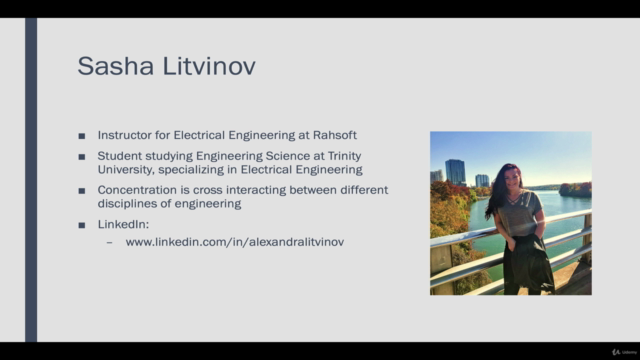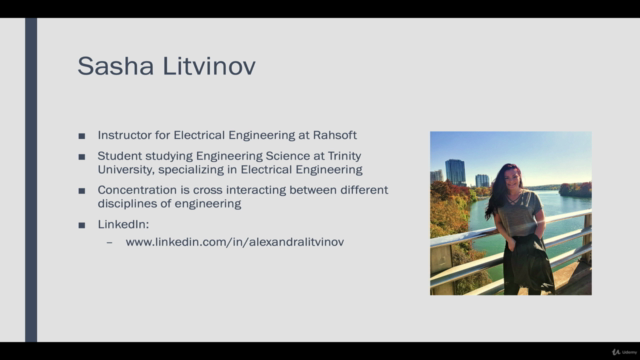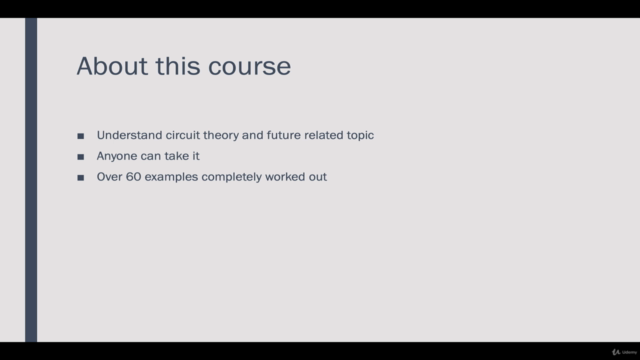Introduction to Circuit Theory - Electrical Engineering

Why take this course?
🎓 Course Title: Introduction to Circuit Theory - Electrical Engineering
Headline: 🚀 Dive into the World of Circuit Theory with Practical Examples & Excel in Your School's Electrical Engineering Course RAHEE101!
Course Description:
Welcome to "Introduction to Circuit Theory," the cornerstone course for any aspiring electrical engineer. This academic journey is designed to provide a comprehensive introduction to electric circuits, from their simplest forms to their most complex configurations. As we progress, we will introduce the fundamental circuit elements and the principles that govern their behavior.
Why This Course?
- Dynamic Content: We're committed to evolving our curriculum, adding new topics and lectures based on student recommendations every quarter.
- Deep Understanding: This course is tailored for students who aim to not just learn but master Circuit Theory.
- Real-World Applications: You will explore the analysis of electric circuits under sinusoidal inputs, a skill highly valued in industry and research settings.
Who Is This Course For? 👩🎓👨🎓
- Engineering major students from Electrical, Chemical, Mechanical, Computer, and Material Science disciplines.
- Physics students eager to deepen their knowledge of electric circuits.
- Young engineers looking to solidify their grasp on circuit analysis.
- Anyone interested in analyzing electric circuits with a focus on the frequency domain.
Course Topics:
We will cover the academic fundamentals of Electrical Engineering Circuit Theory, similar to what you would encounter in the early years of an Electrical Engineering Undergraduate program. Our approach is hands-on, focusing on examples and problems rather than lengthy lectures. Here's a sneak peek into the topics we'll be tackling:
- Current and Charge: Laying the foundation for your understanding of electrical circuits.
- Ohm's Law: The cornerstone rule that relates voltage, current, and resistance.
- Nodes, Branches, and Loops: Mastering the topology of circuits to solve problems with confidence.
- Kirchhoff's Current Law (KCL): Understanding how the sum of currents at a node equals zero.
- Kirchhoff's Voltage Law (KVL): Learning how the sum of voltages around a closed loop is zero.
- Series Resistors and Voltage Division: Analyzing circuits with resistors in series and performing voltage division calculations.
- Parallel Resistors and Current Division: Solving problems involving resistors connected in parallel.
- Equivalent Resistance - Current and Voltage Division Examples: Simplifying complex circuits through equivalent resistance concepts.
- Wye-Delta Transformations: Mastering the art of transforming circuit configurations for easier analysis and problem-solving.
- Wye-Delta Transformations Examples: Applying the transformation technique to solve real-world problems.
By the end of this course, you'll have a solid understanding of Circuit Theory that will not only help you excel in your academic endeavors but also prepare you for practical engineering applications. Enroll now and join us on this electrifying journey through the world of circuits! 🌟
Join Us & Electrify Your Future! Sign up for "Introduction to Circuit Theory" and become an expert in electric circuit analysis today! 🎙️⚡
Course Gallery




Loading charts...